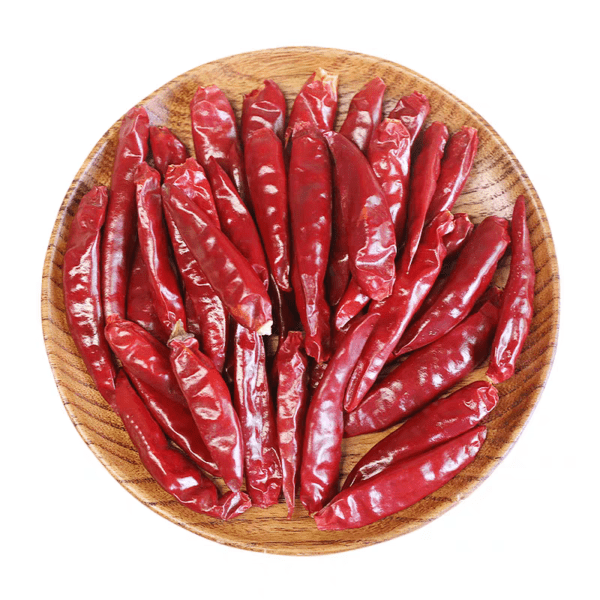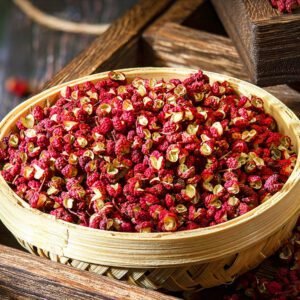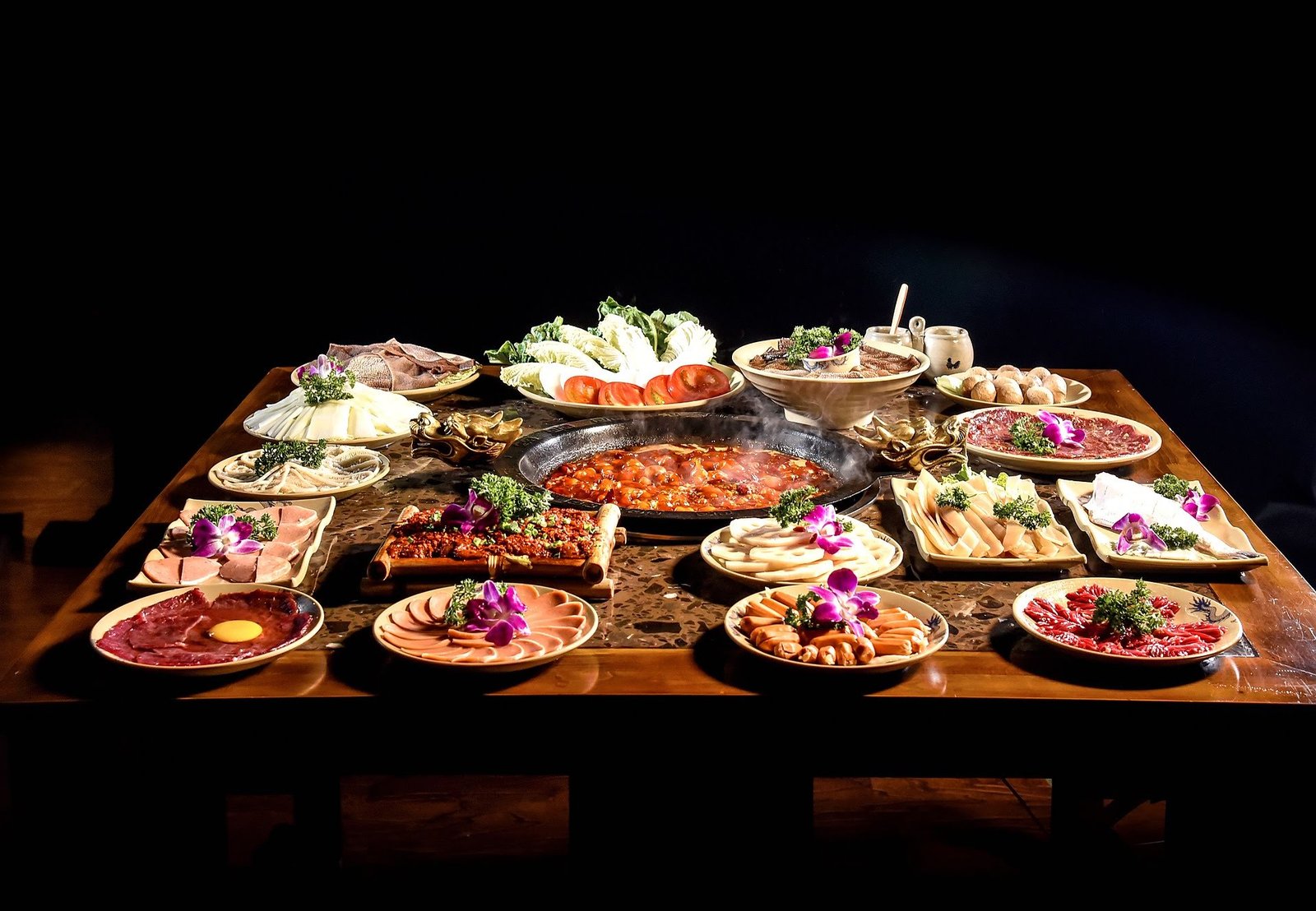In the process of frying hot pot base, chili pepper is the core element that determines the flavor level. Different varieties of chili peppers give the hot pot a soul through their unique spiciness, aroma and color. The following introduces the characteristics of chili pepper varieties, processing technology and practical applications from the perspective of hot pot, and deeply analyzes its key role in hot pot.
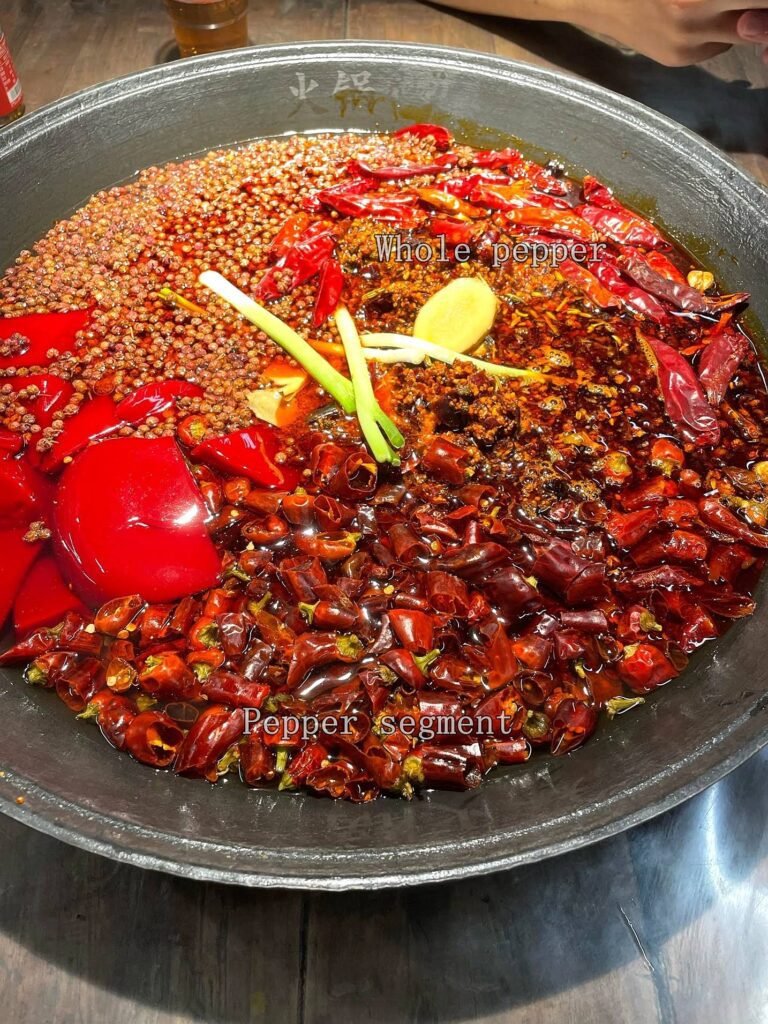
1、The classification of peppers in hot pot broth
First of all, let’s explain the nouns. The chili peppers used in hot pot are generally dried chili peppers, and fresh chili peppers are rarely used. Because of the translation differences between Chinese and English, let’s first understand a few nouns for chili peppers in hot pot: whole chili peppers, chili peppers, glutinous rice cake chili peppers, hot pot chili peppers, etc.

A、Whole pepper:
a whole chili. In hot pot, whole chili is mainly used for garnishing, and it does not significantly increase the spiciness and color.
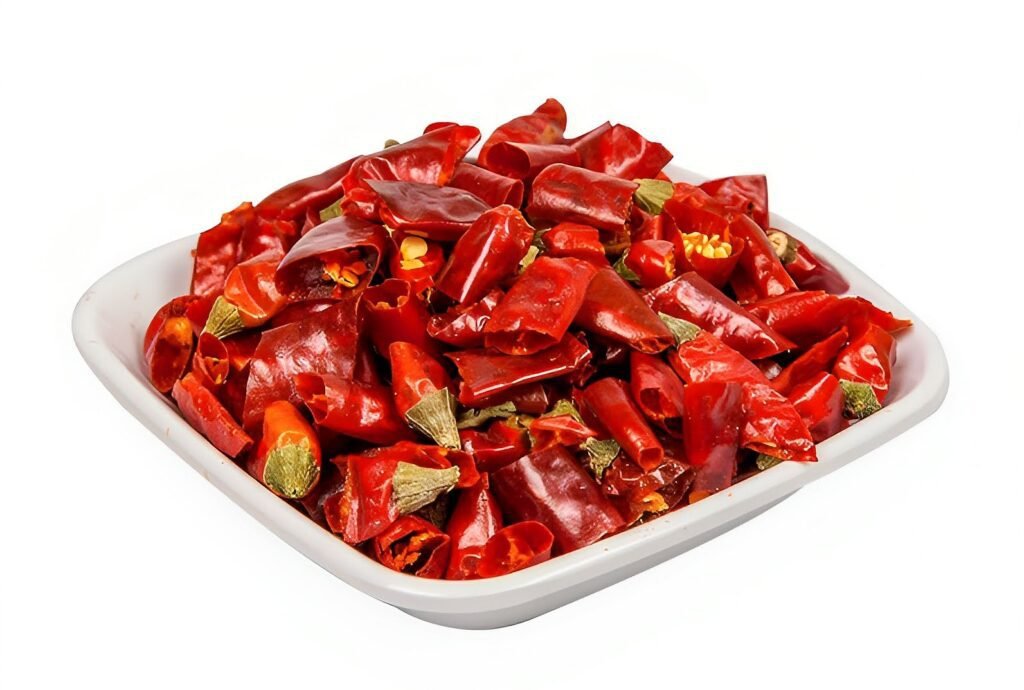
B、Chili segments:
Cut the whole chili into 1-2cm circles. In Europe and America, people are used to using chili powder or chili flakes, but in hot pot, chili segments are the most frequently used, and the most scientific and convenient. Because the spicy element of chili is mainly inside the skin of the chili, cutting the chili into circles can release the spicy taste and chili red.
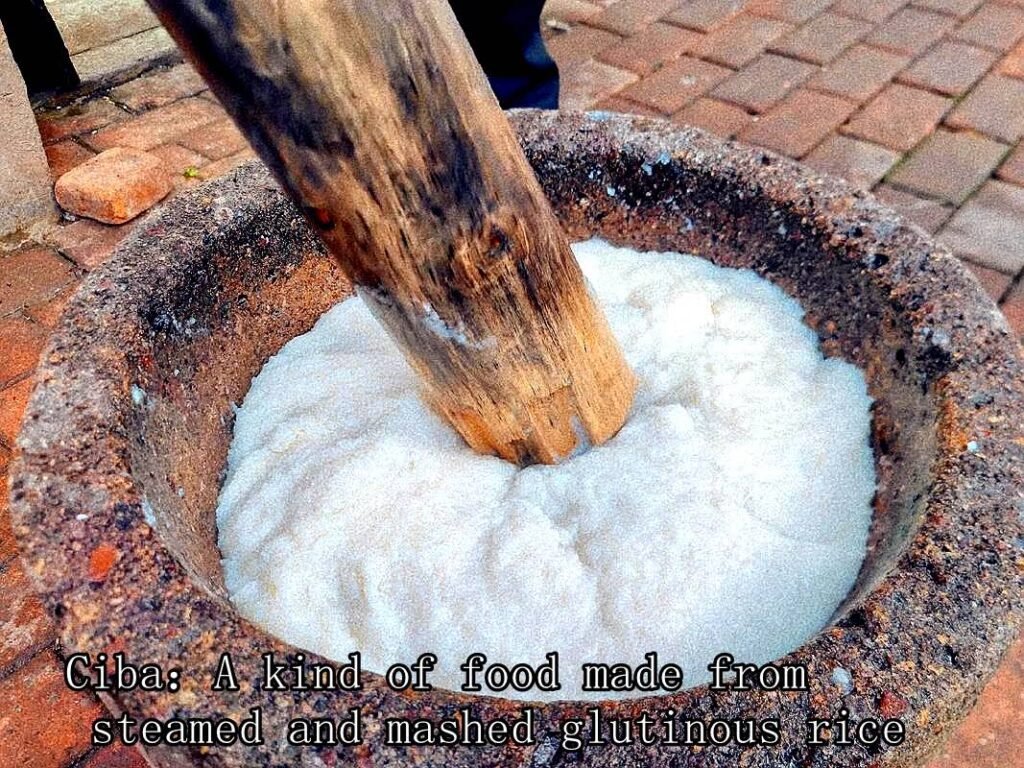

C、Ciba chili:
This term is unknown to many Chinese people outside of Sichuan and Guizhou. It is actually made by boiling dried chili peppers in steam or water until they are cooked to a certain temperature, and then crushing them with a crusher. This is a chili paste that is similar in shape to glutinous rice glutinous rice cakes, and is made from one or more types of chili peppers . The chili peppers after production are in the shape of a snack called glutinous rice cakes, so they are called ciba chili peppers. Ciba chili peppers are used to stir-fry hot pot base because in traditional craftsmanship, such chili peppers can make the oil color faster and increase the spiciness.
2. Common pepper varieties and characteristics of hot pot base
The main varieties of peppers used in hot pot are: Chaotian pepper, new generation pepper, starry sky pepper, Shizhu red pepper, bullet pepper, Indian pepper, etc. Some of these peppers are named after their places of origin.
In China, we found that the higher the latitude, the spicier and less fragrant the peppers grown, and the lower the latitude, the spicier the peppers are and the less fragrant they are. For example, the peppers in India (low latitude) are spicier but less fragrant, while the chili peppers grown in China’s Ningxia Province (high latitude) have thick skin, low spiciness and good fragrance.

A、Chaotian pepper :
It is a variety of pepper, named because its berries grow upward . Chaotian pepper is widely planted in China and widely used in Sichuan. Chaotian pepper is the soul of Sichuan cuisine. Chaotian pepper in Sichuan is mainly used in the production of bean paste and Sichuan cuisine. Therefore, it is rarely used in hot pot because of its high yield.

B、xinyidai peppers:
To be precise, it is a variety of chili pepper. Because it is grown in Henan Province, China, where the latitude is moderate, the peppers grown are fragrant and spicy. This feature is very suitable for making hot pot. xinyidai peppers are generally planted in the gaps between wheat in Henan, so the yield is relatively large, and the supply for hot pot is relatively stable.

C、mantianxing peppers :
Also known as Seven-Star Pepper or Millet Pepper, it is native to Guizhou and is famous for its high spiciness and unique aroma. If you like to increase the spiciness but don’t want it to be too spicy, Guizhou mantianxing Pepper is your best choice. Unlike the Indian Devil Pepper, it has a mild spiciness with a light milky flavor, which is spicy for the mouth but not the stomach .

D、shizhuhong peppers:
It is named after Shizhu County, Chongqing. shizhuhong peppers is bright in color, good in luster, spicy, high in oil content, strong in fragrance, thin in skin and thick in flesh, high in hardness, and few in seeds. shizhuhong peppers is divided into No. 3 pepper or No. 5 pepper. For hot pot, we recommend Shizhu red No. 3 pepper. Shizhu red No. 3 pepper has a strong and lasting fragrance, and is spicy. The red oil boiled from it is bright red and fragrant .

E、Bullet Pepper:
It is very short and thick, and gets its name from its bullet-like shape. It is moderately spicy and lacks aroma, and has a low content of red pigment , so it is generally used in combination.

F、Indian pepper:
Originated from India, it is extremely spicy, enough to make people cry and even produce a burning sensation. The main purpose of using Indian pepper to stir-fry hot pot base is to reduce costs. Because of its high spiciness, a small amount of Indian pepper can be used to achieve the spiciness. However, Indian pepper is spicy and will produce a spicy burning sensation. Therefore, we do not use this pepper when stir-frying hot pot base ourselves.
3、The characteristics of various hot pot peppers
The following is a brief introduction to the characteristics of these peppers.
A. xinyidai peppers
- Characteristics : moderate spiciness, strong aroma, bright red color
- Advantages : Balanced spiciness and aroma, suitable for the general public, often used in basic base material preparation
- Disadvantages : When used alone, the layering is weak and needs to be combined with other peppers to enhance the complexity
- Application scenario : The basic spicy source of traditional beef hotpot and clear oil hotpot
B. mantianxing Peppers
- Features : Extremely spicy, small and uniform particles
- Advantages : Instantly stimulates a strong spicy feeling, suitable for hot pot types that pursue extreme stimulation
- Disadvantages : Excessive use can easily cause a dry and spicy feeling, and the dosage needs to be precisely controlled.
- Application scenario : Intensify the spiciness of Sichuan and Chongqing hotpot and spicy hotpot
C. shizhuhong Peppers
- Features : Bright red color, mild spiciness, fruity aroma
- Advantages : Give the hot pot an attractive visual effect and enhance the roundness of the overall flavor
- Disadvantages : Low spiciness, needs to be used with high spiciness varieties
- Application scenarios : embellishment of clear soup hot pot, color optimization of red oil hot pot
D. Bullet Pepper
- Features : moderate spiciness, thick meat
- Advantages : Strong resistance to boiling, can still maintain its shape after long-term boiling
- Disadvantages : The aroma is released slowly and needs to be processed in advance to stimulate the aroma
- Application scenarios : Hot pot categories such as Chuanchuanxiang and Maocai that require long-term soaking

4、Processing technology and frying key points of pepper
A、The role of chili peppers in hot pot broth
The main purpose of adding chili peppers to stir-fry hot pot base is to increase the spiciness, aroma and color. Therefore, people used to process chili peppers into glutinous rice peppers at first. However, with the development of society, for health reasons, beef tallow is no longer resistant to high oil temperatures. Therefore, when frying the base, in order to maintain the aroma of beef tallow, the oil temperature cannot be too high. However, if the temperature is too low, the water in the glutinous rice peppers will evaporate very slowly, and the fried hot pot base will easily have a bad aroma and a turbid soup.
Therefore, our factory was the first in the industry to use all pepper segments to stir-fry the hot pot base. This can not only bring out the aroma and spiciness of the pepper, but also minimize the moisture of the hot pot base.
B、The cooking technique of hot pot base
By the way, we are also the pioneers of low-temperature stir-frying hot pot base. At the beginning, because we used fire-refined beef tallow, one of the characteristics of beef tallow at that time was high temperature resistance, so it was the right method to stir-fry the base at a temperature above 140°. However, for the development of the industry and health, beef tallow has a national product standard, so the beef tallow aroma of the produced beef tallow will be lost after 110°. If the hot pot base is still stir-fried in the traditional way, the beef tallow aroma will be very low after the base is stir-fried. So we proposed to stir-fry at a temperature of about 100° throughout the process, but this places very high requirements on the quality of other raw materials and the stir-frying process, so this is a systematic project, but low-temperature stir-frying is the trend of industry development.
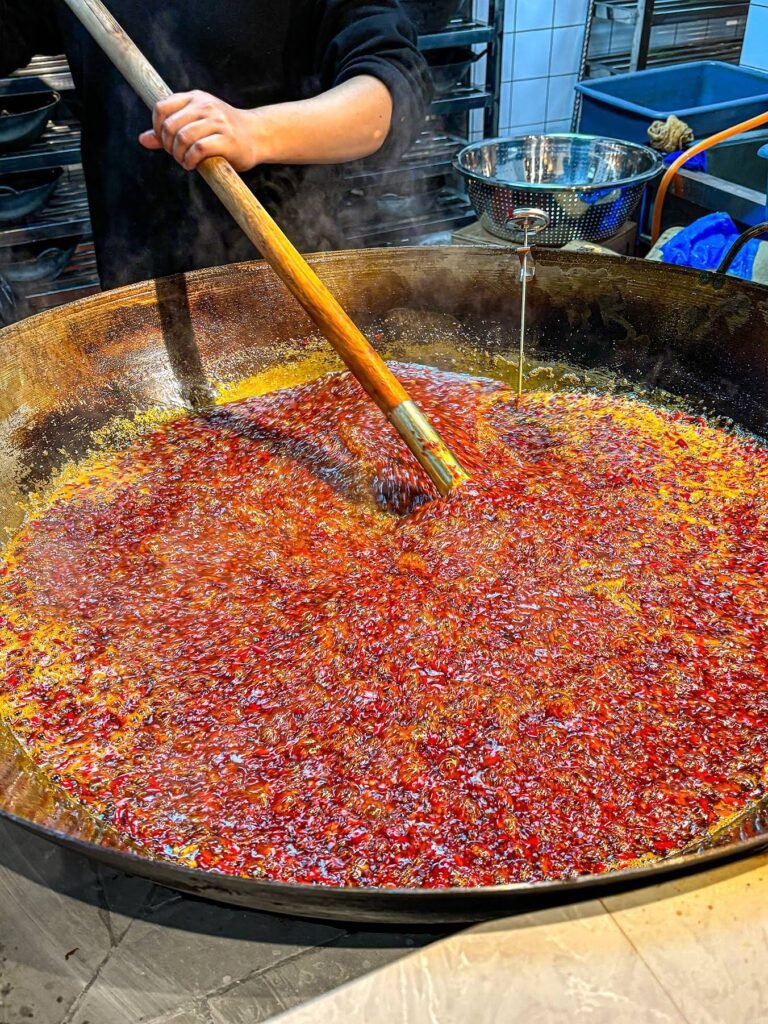
C、The processing technology of chili peppers
Let’s continue with the processing of peppers. First, when frying hot pot base:
Ciba Chili:
Ciba Chili is generally made by boiling chili segments in hot water or steaming them. The way to confirm that Ciba Chili is cooked successfully is to pinch the cooked chili segments with your fingers.
Chili segments:
Chili segments only need to be soaked in 40-50° warm water to remove dust from the surface of the peppers.
The first two types of peppers are mainly used for stir-frying hot pot base. The following are the bases used for mixing with the pot base:
Whole peppers:
Whole peppers are mainly floated on the surface of the pot to make it look good. If you use less red oil for the pot, you can also float peppers with larger areas on the surface of the pot to increase the thickness of the red oil.
Chili segments:
Just like the hot pot base, you only need to soak the chili segments in 40-50° warm water to remove the dust on the surface of the chili. It is used to increase the spiciness of the hot pot, because the spiciness of the hot pot base is fixed after it is fried. For diners who feel it is not spicy enough, add chili segments to the hot pot to adjust the spiciness.
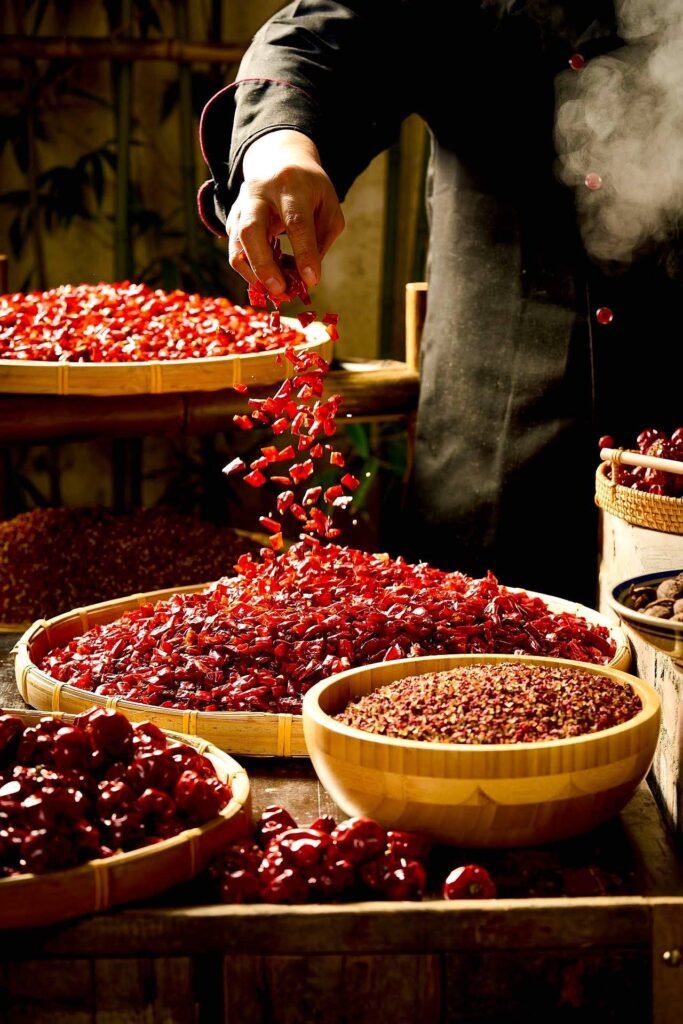
5、The core role of pepper in hot pot base
1. Flavor Construction
- Basic spiciness : Capsaicin stimulates the taste buds to create a spicy base
- Layering : Use different levels of hot peppers in combination (such as mantianxing Peppers + xinyidai Peppers) to create a spicy taste change from front to back
- Aroma balance : Capsanthin combines with oil to produce a unique fat-soluble aroma
2. Functional effects
- Antiseptic and antibacterial : Capsaicin has natural antibacterial properties, which can extend the shelf life of the base material
- Enhance flavor and color : Capsanthin gives hot pot an attractive orange-red color, increasing appetite
- Taste buffer : A moderate amount of chili can neutralize the greasy feeling of animal fat and enhance the freshness of the soup base
3. Scene Adaptation
- Beef hotpot : Choose high-spiciness varieties (such as mantianxing Peppers ) to balance the heavy fat
- Clear oil hot pot : Paired with aromatic chili peppers (such as the xinyidai Peppers) to highlight the refreshing spicy taste
- Chuanchuanxiang : Mix pepper and powder to achieve quick flavor and long cooking time
6、Common Misunderstandings and Solutions for Using Chili Peppers
1. The spiciness is out of control
- Problem : A single high-spiciness variety leads to excessive spiciness
- Solution : Use a “spicy main flavor + auxiliary flavor” combination (such as mantianxing Peppers + shizhuhong Peppers)
2. Bitterness
- Problem : The cooking temperature is too high or the peppers are not completely dried.
- Solution : Control the oil temperature not to exceed 200℃ and ensure the water content of the pepper is less than 12%
3. Lack of aroma
- Problem : Improper pretreatment leads to loss of volatile aroma
- Solution : Soak the peppers in white wine for 10 minutes before frying to stimulate the aroma substances.

Conclusion
The selection and use of hot pot chili peppers is essentially an art of balance. Only by scientifically matching different varieties of chili peppers and combining them with precise processing techniques can we create a hot pot soup base with rich layers and endless aftertaste. Whether it is the mellow and spicy taste of traditional hot pot or the fresh and refreshing taste of new-style clear oil hot pot, chili peppers are always the key fulcrum to pry open consumers’ taste memory. Mastering these core points can not only improve the quality of hot pot, but also build a unique flavor barrier for catering entrepreneurs in the fierce market competition.
Of course, if you have a strong interest in hot pot, or want to learn more about hot pot knowledge and skills, then hurry us! Let you enjoy the food at the same time can also learn more interesting things. We are a professional hot pot base factory, we come from China, we supply hot pot base to more than 5000 Chinese hot pot restaurants. We have 10 years of experience in the production of spicy spices, in addition to the production of hot pot base materials and a variety of spicy spices. Come and join our hot pot family! Let’s take a dip in the world of hot pot!
dried cayenne pepper
Chinese chili peppers grown naturally, sun dried and shaped, rigorously screened by a color sorter. It will definitely become a great helper for you to cook delicious food!
Purchase process: Select your favorite product → Add it to the shopping cart → Enter the delivery address, calculate the shipping fee → Make the payment → wait for the delivery
Mode of transportation: China delivery, China to the Americas transportation time: 5-25 days; 6-30 days from China to Europe(Specific arrival time welcome email consultation);
Product Name: Chinese Dried Chili
Weight: 1 lbs
The characteristic of this pepper is that the fragrance and spicy taste will be very prominent. We are the hot pot base material factory, we need to use 3-6 types of chili peppers to fry the hot pot base material, and we also provide the wholesale of chili peppers. If you buy our chili peppers, we will cut them into segments or grind them into different degrees of chili powder for you free of charge. Welcome to pepper interested friends consult us.
Time of transportation: Most countries in Europe and North America retail we will choose the time of 5 to 15 days of air transportation, but some areas will have air restrictions on pepper products, so we will change to other modes of transportation.

